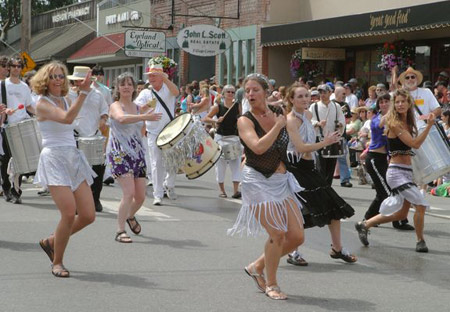Art of crowd control
Hitler and Mussolini were able to make tens of millions of people believe in brutal fascism. Now psychologists and neurologists have found the secret to help them do that.
Scott Wiltermuth, a psychologist at Stanford University (USA) and some colleagues found organizing the collective activities, such as parade or dancing, helped increase the crowd's loyalty to the group. 'These activities make people feel they are part of a larger entity, so we treat organizations as our lives , ' he said.
The team divided 96 people into 4 groups and let them listen to the same song. The first group mentally recited the lyrics, the second group sang in words, the third group sang in words and danced in a unified way, the fourth group heard and danced. After the song ended, the experts asked volunteers about their thoughts on the people in the group. The results showed that most volunteers in the chaotic dance group did not want to continue to participate, while the other three groups were willing to stay together if the test continued.
University of Virginia psychologist Jonathan Haidt said the Scott team's study helped explain why Nazi bosses in World War II used parades and collective singing to make the crowd perform. their will. However, he stressed that such tricks could be used for peaceful purposes. For example, group dance and singing activities in an area with ethnic or religious conflicts can ease tension.

Collective activities such as parade and dancing increase the level of individual attachment to the group.Photo: kiltedband.com.
Meanwhile, Charles Seger, Indiana University psychologist (USA) and colleagues conducted another test to understand the impact of propaganda images on people. The team divided students into two groups and then gave a group a picture of the university-related photos. Experts then asked students to assess their feelings (pride, feeling of happiness) on a school scale. The results showed that the grades of students who considered photos were much higher than those who did not.
Jonathan commented that human brains tend to force us to imitate our fellow human beings. 'We are programmed to automatically copy other people's behavior. In the human brain there is a special type of neuron. They glow when we take an action or see other people act in the same way we do, ' he said.
Neuroscientists have found much evidence supporting Jonathan's hypothesis. Vasily Klucharev, a Dutch neurologist, found that the brain releases more dopamine (a substance that causes excitement) when we join an activity with many people. His team asked 24 women to rate the attractiveness of more than 200 other women on a scale. When a volunteer sees that his score is too big compared to many others, they tend to adjust. Magnetic resonance imaging results show that the brain of a volunteer emits an "error signal" whenever a woman realizes the difference in scores compared to others. 'That's how we learn to follow the crowd,' Vasily concluded.
- What to do when falling in a chaotic crowd?
- Secret to escape from the chaotic crowd
- Hot people are easy to be big bosses
- Sitting home guessing the crowd reaction
- Confession - The secret to ants through the crowd
- It's not easy to find acquaintances in the crowd
- The costume is invisible from silk
- The crowd walking could all collapse the bridge
- New invention helps people invisible to the crowd
- Life skills save your life in unexpected situations
- History of ups and downs of birth control pills
- Find new ways to control mosquitoes
 'Fine laughs' - Scary and painful torture in ancient times
'Fine laughs' - Scary and painful torture in ancient times The sequence of numbers 142857 of the Egyptian pyramids is known as the strangest number in the world - Why?
The sequence of numbers 142857 of the Egyptian pyramids is known as the strangest number in the world - Why? History of the iron
History of the iron What is alum?
What is alum?